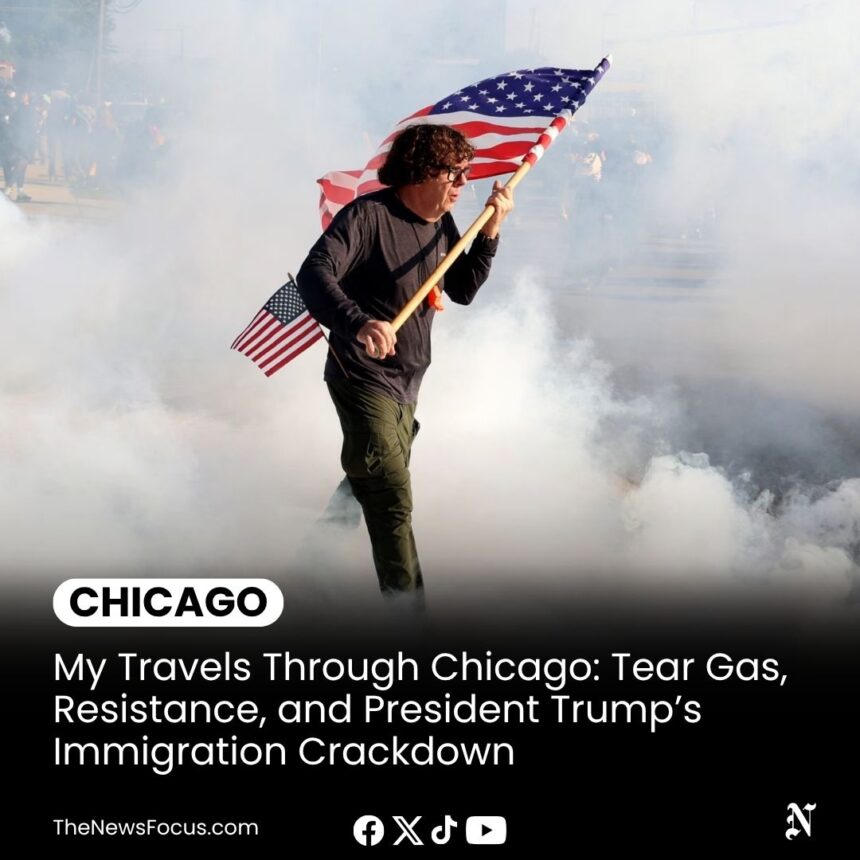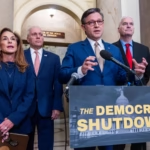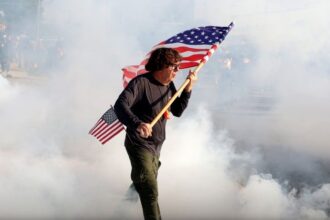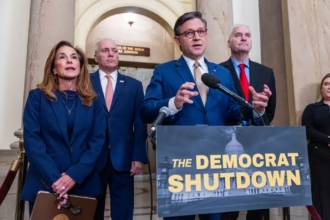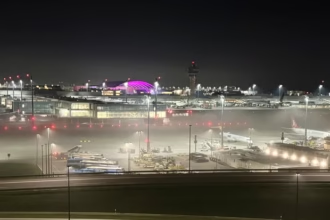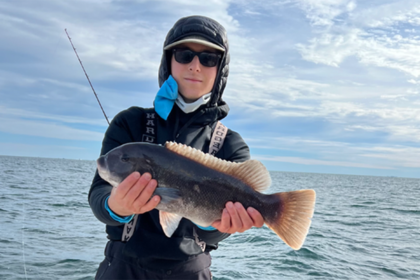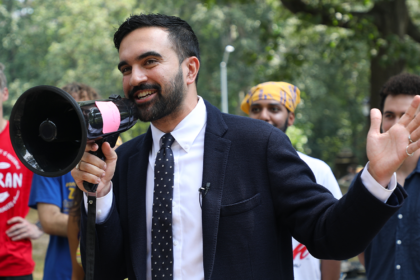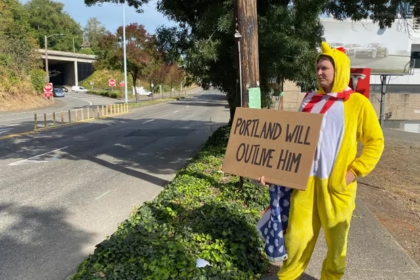At 5 a.m. on a warm September morning, a small but determined crowd gathered outside the Broadview immigration processing center in the Chicago suburbs. The building, with its boarded windows, razor-wire fences, and black drapery covering its security perimeter, looked less like an American facility and more like a fortified outpost in a war zone. Masked ICE agents in tactical uniforms moved in and out as protesters shouted chants: “Quit your job! Take off your mask!”
This site has become a flashpoint in President Trump’s intensified immigration crackdown, known in Chicago as Operation Midway Blitz. Hundreds of undocumented people arrested across the region are brought here for processing and, eventually, deportation. For many local residents, this is a moment of collision—between law enforcement wielding tear gas and communities fighting for dignity, legal protections, and humane treatment.
The Chicago Frontline
The day I visited, the residue of tear gas still clung to my shirt. I traveled into Lemont, a quiet suburb not far from Broadview, where a steady line of mourners had gathered. Many came to pay tribute to Charlie Kirk, the conservative youth activist whose fatal shooting is being used by the administration to justify its approach here. A sprawling memorial spilled onto the sidewalk, with slogans like “Fight for freedom or lose it.” Some declared Kirk a martyr; others expressed frustration at the role social media and tribal politics play in deepening division.
Back at the processing center, scenes grew more tense. Young women cried out, trying to reach their detained fathers. Kat Abughazaleh—a congressional candidate—was pushed to the ground by federal agents as she resisted displacement during a protest. The use of chemical munitions, drones overhead, and agents in heavy gear painted a picture not just of law enforcement, but of occupation.
Resistance from Within
Across the city, grassroots organizers and immigrant advocacy groups have mobilized rapidly. Neighborhoods are hosting “Know Your Rights” workshops. Some churches and community centers are coordinating safe routes and legal support for families at risk of deportation. People are patrolling local streets, watching for ICE activity, offering to drive others to safety or shelter.
In Broadview, protesters chant even as agents advance or withdraw. Women hold up photos of missing loved ones; children wave signs reading “Stop the Raids.” The crowds know they are not faceless—media streams, volunteers carry body cameras and document interactions in real time.
The Stakes and the Strategy
This crackdown is part of a political playbook. The Trump administration is clearly targeting Democratic-led cities, aiming to highlight lawlessness and rally his base. In Chicago, the heightened enforcement is not only about immigration—it’s theater, pressure, and a message shot across the bow of local officials who have long resisted federal oversight.
But this approach comes at a real human cost. Immigrants who arrived legally, those with pending asylum claims, and vulnerable families are caught in the dragnet. The strategy is to make enforcement visible, painful, and divisive, in the hopes that fear will fracture solidarity and shift public sentiment.
The local response suggests Trump underestimated resistance. The city’s leaders, advocates, and residents are not meek. The movement here is part moral, part political: refusing to let fear break neighborhoods, demanding dignity even in detention, and contesting the claim that enforcement is a neutral operation when it’s deeply selective.
What Comes Next
Tensions will almost certainly escalate. More ICE raids, more protests. The question is how far each side pushes. Will the city quietly comply, hoping to blunt tensions? Or will it double down—legal resistance, civil disobedience, and sanctuary protections?
One thing is clear: Chicago’s immigrant communities are refusing to vanish beneath this crackdown. Their defiance is rooted in pain, justice, and an unyielding belief in their right to have a place, a voice, and protection under the law.


